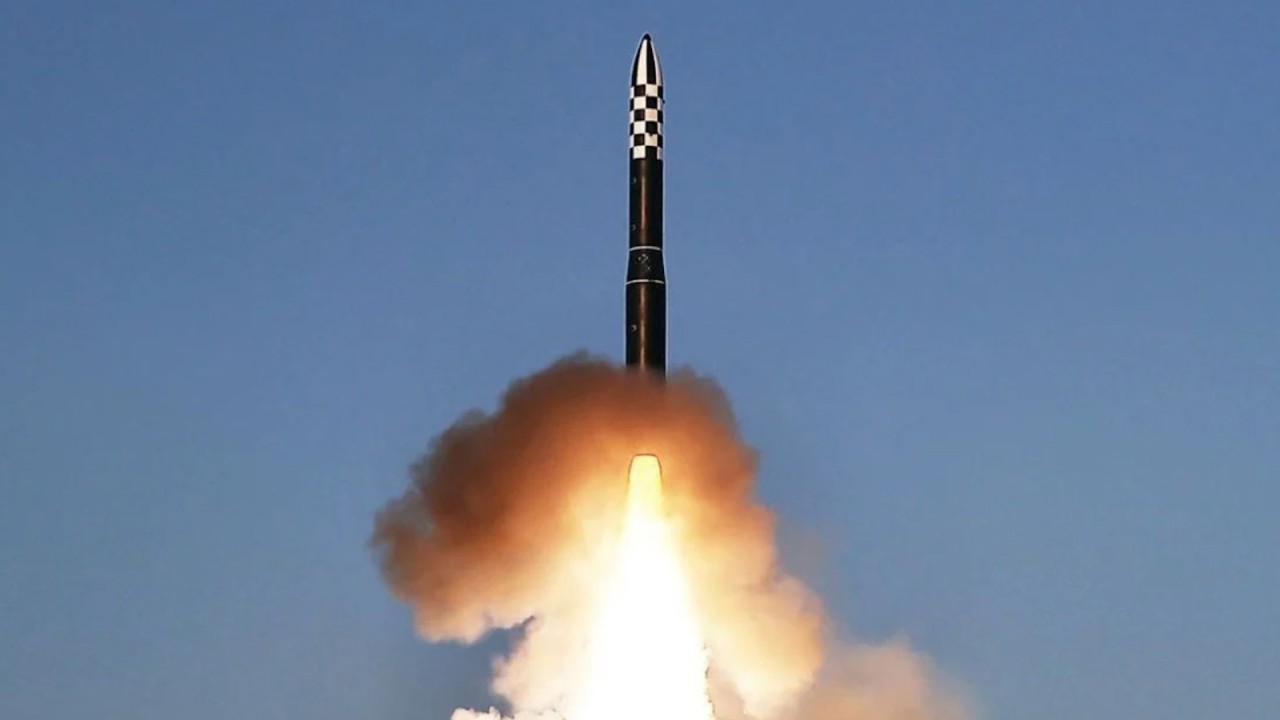Advertisement
Opinion | North Korea’s missile test days before US election sends powerful message
No isolated act of aggression, the missile test was a calculated show of a strengthened alliance and a preview of mounting challenges
Reading Time:4 minutes
Why you can trust SCMP

In an unmistakable show of military might just days before the US presidential election, North Korea launched its newest solid-fuel intercontinental ballistic missile (ICBM), the Hwasong-19, on October 31. Far from a simple reminder of Pyongyang’s capabilities, the event, carefully timed amid condemnation of North Korea’s reported deployment of troops in support of Russia, highlighted its deepening alliance with Moscow.
Advertisement
The signal for the United States and its allies is that the foreign policy stakes are sharply escalating. By leveraging this moment of electoral uncertainty, North Korea and Russia appear to be challenging the global power structure, leaving global and regional observers increasingly anxious about what may come next.
North Korea’s missile launch underscores a significant pivot in the global power dynamics, suggesting that Pyongyang’s threats are no longer isolated provocations but part of a broader, potentially coordinated threat landscape with Russia. This evolving alliance presents a complex and intensifying challenge, particularly for the US and its allies in Asia and Europe, forcing regional stakeholders to reassess their defence postures and alliances as previously separated threats converge.
While the launch marks Pyongyang’s first ICBM test this year, North Korea’s missile threat was firmly established last year. In April 2023, South Korean President Yoon Suk-yeol visited the US, where President Joe Biden agreed to extend nuclear deterrence efforts on the Korean peninsula. Earlier that month, North Korea had tested its Hwasong-18, a missile it also tested in July and December last year when the US and South Korea sat down to Nuclear Consultative Group meetings.
Japanese intelligence has confirmed the Hwasong-18 could reach up to 15,000km (9320 miles), theoretically covering continental US and possibly parts of Europe. The Hwasong-19 has at least the same range capability. North Korea claims it is “the world’s strongest strategic missile” but questions remain as to how advanced it really is. Nevertheless, the Hwasong-19 launch underscores North Korea’s ability to directly threaten the US and other Nato members.
Advertisement
Such ICBM threats can be nuclear. North Korea is beleived to possess 50 nuclear warheads and has conducted six nuclear tests. After its fifth test in 2016, Seoul said North Korea was ready to conduct an additional nuclear test at any time. This nuclear threat complicates US and allied missile defence strategies and heightens the need for resilient, layered defences against a potential multilateral threat.

Advertisement
.jpg?itok=DJ5XFWbm&v=1725256567)
